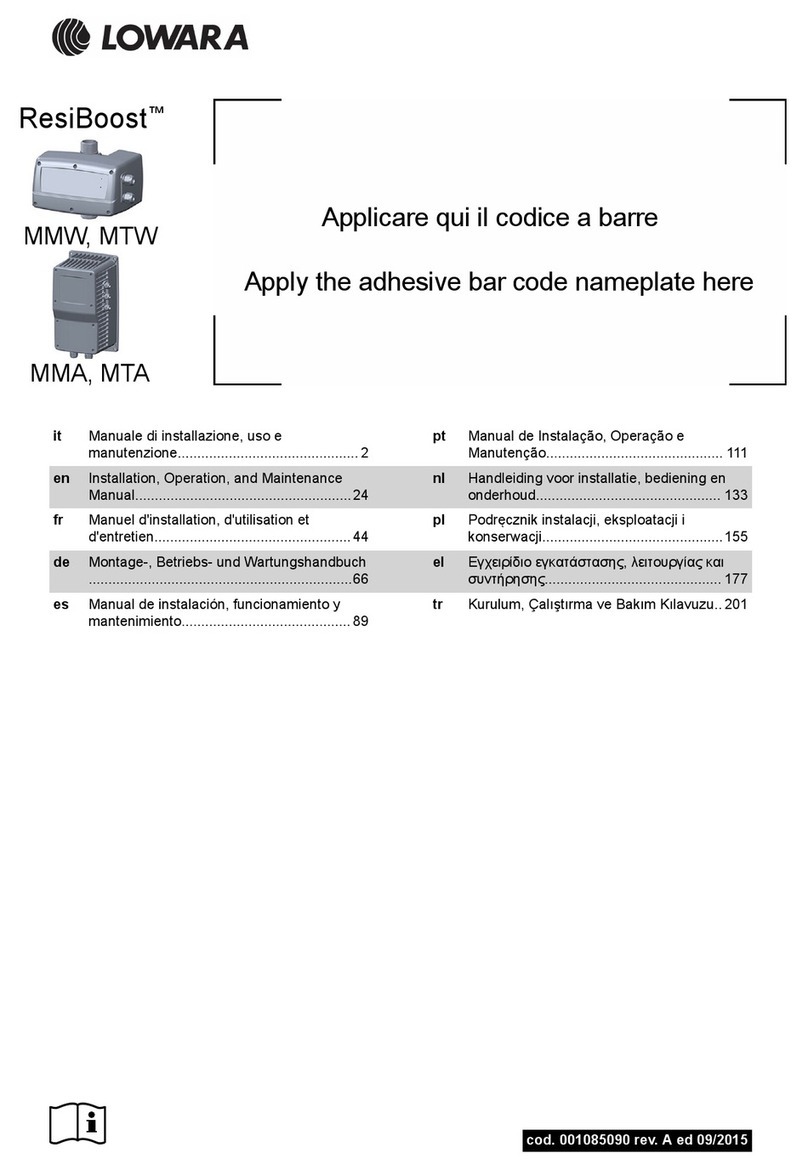
The H-3301/3311 is a precision shaft encoder with a resolution of two hundred counts per revolution
(0.005 ft with a 1 ft circumference pulley).The H-3301/3311 has an internal microprocessor controlled
digital counter which monitors two digital outputs from a shaft position sensor. The sensor generates
quadrature pulses and phase information. The phase information indicates which direction the shaft
is turning. The H-3301/3311 continuously maintains a digital count representing the current position
of the shaft. The H-3301/3311 counts to ±32,768 steps.
During normal operation, the SDI-12 data recorder sends an address followed by a measurement
command to the H-3301/3311 sensor. The H-3301/3311 wakes up from its low power sleep mode,
converts the shaft position into Feet, Meters or other units programmed for the stage
measurement and stores this data in its data buffer. Once the data is ready, the data recorder
collects the data from the H-3301/3311’s data buffer.
Introduction
3
The WaterLOG® H-3301/3311 is a digital shaft encoder which measures water depth by
monitoring the position of a float and pulley. The H-3311 has the same functionality as the H-3301
with the addition of a built-in display and manual offset adjustment feature making it easier to setup
and use in the field. See Chapter-2 for details concerning the LCD display and offset adjust control.
The H-3301/3311 is easy to use and works with any SDI-12 data recorder. For older loggers,
ALERT systems and the weather service LARK, the H-3301/3311 has a quadrature output that is
equivalent to the Handar 436A type shaft encoder. The “Serial-Digital Interface” is ideal for data
logging applications with the following requirements:
• Battery powered operation with minimal current drain
• Low system cost
• Multiple sensors on a simple three wire cable
• Up to 250 feet of cable between a sensor and the data recorder (Use of H-423, SDI-12 to RS485
converter extends the range to 1000’s of feet)
The H-3301/3311 has the following features:
• Scales the encoder position into user units of feet, meters, etc.
• Precision dual bearing design with special low temperature lubricant
• Threaded shaft compatible with older mechanical shaft encoders
• Zero backlash
• 200 counts per revolution for the SDI-12 output
• Sealed enclosure protects from moisture and dirt
• Low current operation (less than 2 milliamps)
• High speed encoder circuitry prevents missing counts due to rapid float movement from
wave action or sudden movement in freeze/thaw conditions - 15 ft/sec typical
• Water resistant connectors provide easy hookup
The LCD display on the H-3311 provides the following additional features:
• Continuous display readout always shows last measured value
• ‘Read’ button causes the H-3311 to continuously update the display while the button is pressed
• The adjust knob allows the user to manually set the stage
• The adjust knob allows the user to manually set the sensor SDI-12 address
Operation




























